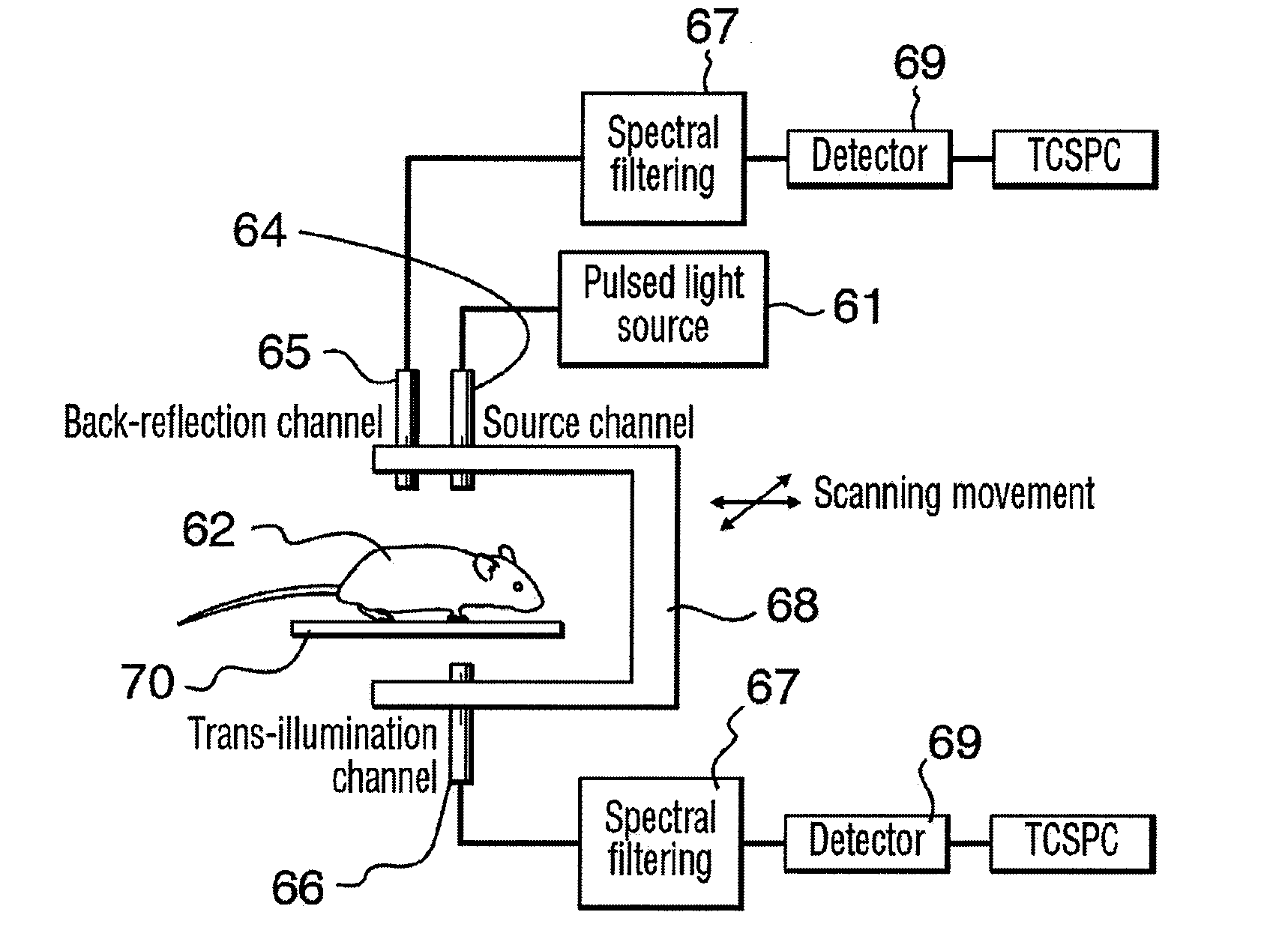Method of decomposing constituents of a test sample and estimating fluorescence lifetime
a technology of constituents and test samples, applied in the field of optical imaging of biological tissue, can solve the problems of background signal interference, inability to completely eliminate background signal, and inability to decompose constituents of test samples
- Summary
- Abstract
- Description
- Claims
- Application Information
AI Technical Summary
Benefits of technology
Problems solved by technology
Method used
Image
Examples
Embodiment Construction
Time-Domain Optical Imaging Apparatus
[0030]Shown in FIG. 1 is time-domain optical imaging apparatus that may be used with the method of the present invention. Systems such as this are known in the art, and other configurations may also make use of the invention. In the arrangement of FIG. 1, source 61 provides light. The light is directed towards a predetermined point of light injection on object 62 using source channel 64. The source channel 64 is an optical means for directing the light to the desired point on the object 62 and may include a fiber optic, reflective mirrors, lenses and the like. A first detector channel 65 is positioned to detect emission light in a back-reflection geometry and a second detector channel 66 is positioned in a trans-illumination geometry. The detector channels 65 and 66 are optical means for collecting the emission light from desired points on object 62 and are optically coupled to photon detector 69. As with the source channel 64, the detector chann...
PUM
 Login to View More
Login to View More Abstract
Description
Claims
Application Information
 Login to View More
Login to View More - R&D
- Intellectual Property
- Life Sciences
- Materials
- Tech Scout
- Unparalleled Data Quality
- Higher Quality Content
- 60% Fewer Hallucinations
Browse by: Latest US Patents, China's latest patents, Technical Efficacy Thesaurus, Application Domain, Technology Topic, Popular Technical Reports.
© 2025 PatSnap. All rights reserved.Legal|Privacy policy|Modern Slavery Act Transparency Statement|Sitemap|About US| Contact US: help@patsnap.com



